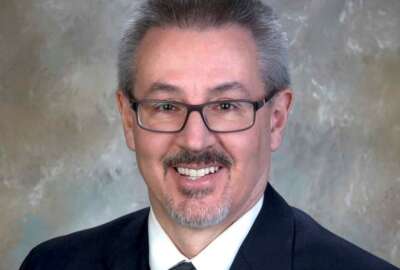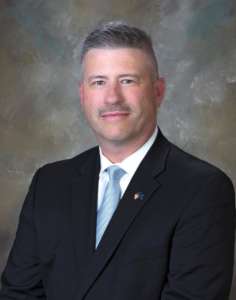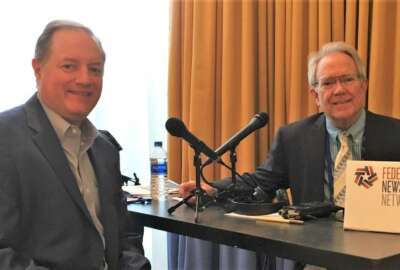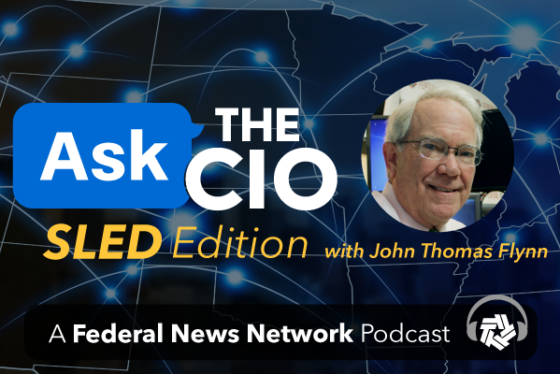
Do state CIOs add value or just get in the way?
State CIOs complain about departmental roadblocks to reform, while the lower officers worry that state officers don't understand their business challenges.
Call it the loop of “non-appreciation,” as it has existed as long as state chief information officers.
These CIOs often find that their enterprise plans are stymied by their IT colleagues at large agencies within the state bureaucracy. IT directors at large agencies repeatedly find that their state CIOs are unaware of their agencies’ business challenges, and are more often an obstacle than a valuable ally.
The former is illustrated by the infamous “here-when” analogy I had explained to me by a state manager during a change management discussion some years ago in Sacramento, as I began my role as California’s first CIO. “I’m a ‘here-when,’ John. I was here when you got here and I’ll be here when you leave.”
Not exactly an encouraging welcome. Of course the latter situation was personified by the large agency official whose response to my offer to help was answered by a succinct, “Just get out of the way.”

Alas, such phenomena offer a useful perspective on the challenges CIOs face across the board in the public sector.
Our recent guest on Ask the CIO: SLED Edition, Jim Weaver, the state of Washington’s CIO, offered an intriguing solution. Prior to his appointment by Gov. Jay Inslee in December, Weaver was chief technology officer reporting to Pennsylvania CIO John MacMillan.
Weaver’s recruitment to the Pennsylvania CTO position was enlightening. He was the leading IT official for the Pennsylvania human services department and was very frustrated by certain aspects of the central IT agency.
“We were in the Department of Public Welfare. We were the 800-pound gorilla in the enterprise. We were probably 40% of the overall Commonwealth enterprise,” Weaver said. However, he faced a central IT agency which constantly interfered. He was told, “’You need to do it this way. No, you don’t understand what the statewide strategy is.'”
As the leader of his departmental IT organization, Weaver said that it was interesting to sit there and actually go back to central IT and reply, “It’s you who [doesn’t] understand our business. You don’t understand what we’re trying to achieve. You don’t understand the fact that we bring a lot of federal dollars onto the table and we can help get things done if we can figure out a way to work together.”
Weaver’s wishes were not in vain. In 2015, the new governor, Tom Wolfe, appointed MacMillan and the new CIO reached out to Weaver saying he wanted to talk.
“John basically looked at me and said, ‘I have some problems I need resolved, and I want you to come over and fix those problems,'” Weaver said.
He explained that it was very surprising and inspirational to have his boss basically acknowledge the fact that there were problems, ask him to fix the situation and empowered him to do so.
“I was very fortunate to be placed into that hole,” Weaver said. He credits this development with leading to the point where Pennsylvania was able to correct many central IT organizational issues, and actually consolidated and centralized IT functions within MacMillan’s purview as the state CIO.
Related Stories
Among the other findings in the 80-page summary report handed over to Weaver was the charge that WaTech was apparently more focused on recovering its costs than providing customer service to its departmental customers.
“We were perceived by the customer base as not providing value and being overpriced,” Weaver said. “And I believe I would be very charitable if I said we had a D- rating on customer service, but it was a very easy story to see and connect all the dots.”
So once Weaver had made the 2,704-mile drive to Washington, as he recounted, his first and foremost focus area was clear: “How do I get the central IT organization back on the right track and what are the things that we can start doing to take a look at that?”
One of his more intriguing answers was to embed some of his senior staff in these larger agencies, in order to learn directly how these operations work from a business perspective and become more aware of what their challenges were.
“It has paid dividends because the central IT organization is so far removed from what’s occurring at the agency front lines,” he said. “It was getting to see the front lines of how the agencies were delivering critical services.”
And it’s working.
“They’re out there. They’re meeting with the people who have some very dire situations, and the more we get to learn what our agencies are doing, the more I can sit down with my fellow cabinet members and actually talk about these issues,” he said.
Weaver explained further how he was recently with Washington State Patrol Chief John Batiste, and was able to discuss the critical activities that his troopers were providing. “The fact that if I’m not delivering on my IT services, I’m putting one of his troopers at risk when they pull somebody off at the side of the road,” Weaver said. That trooper needs to know what they’re walking up to when pulling that car over; whether or not it’s a felon, if there is a warrant for this person or whatever the case may be. “We can’t be putting the trooper into critical harm.”
What Weaver discusses with the other cabinet members at the end of the day, is not about him as a state CIO or WaTech. It’s about the agencies. “If my agency partners are successful, I’ve done my job. The credit all belongs with them.”
If they’re out there getting credited for things that they’re doing across the state, delivering critical and innovative programs, then Weaver believes he’s doing his job as state CIO because his operation is enabling that success from behind the scenes.
“And that’s where we belong,” he concluded.
Copyright © 2025 Federal News Network. All rights reserved. This website is not intended for users located within the European Economic Area.






